Since the middle of the 20th Century, the U.S. dairy industry has embraced corn silage as the No. 1 most economical and energy-dense forage fed to cows and heifers. Many millions of acres are planted in silage corn every year and many billions of pounds of corn are harvested and put up as silage in horizontal and vertical storage systems.
The whole purpose of ensiling corn is to recover and preserve as much organic matter as possible after harvesting, retaining its nutritive value in a fermented and stabilized state and having it available to feed to animals year-round.
Corn (known as “maize” in many parts of the world) is truly a wonder forage, having the attributes of a forage as well as a grain. Modern science continues to develop new hybrids that promise greater yields with both better fiber and starch digestibility.
Each year the investment in a crop of corn is sizable for a dairy farm. Proper management of the corn crop is critical at the time of harvest, and much has been written on the proper moisture level, grain development, chop length, packing and storage. Assuming all of those things were done correctly, the dairy farmer can breathe a little easier, knowing nature will do its thing and ferment all that sugar and organic matter into a high-quality feedstuff.
And then the pit or silo must be opened, at which time many cubic feet of feed are exposed daily to air and rain, heat and cold. Once this high-moisture organic matter is re-exposed to the elements, it begins to decompose and spoil.
For bunk silos, managing the face on a daily basis so that secondary fermentation and spoilage is kept to a minimum enables dairy farmers to get the most out of their investment.
Poorly managed silage piles disrupt the quality and consistency of the feed. Excessively pitted and gouged faces on silage piles expose that much more of the plant material to the air and elements each day. If it’s knocked down from the pile today, it should be fed today.
Extended periods of exposure will also impact moisture content, as the exposed material on the face air-dries, which will have a significant effect on weights in the feed trucks and mixer wagons. The silage face should be maintained as a smooth surface perpendicular to the floor and sides in bunker, trench and drive-over storage systems. This will minimize the surface area exposed to air.
An average removal rate of six to 12 inches from the face per day is a common recommendation. However, during periods of warm, humid weather, a removal rate of 18 inches or more might be required to prevent aerobic spoilage.
Like many other areas of management on a dairy, consistency with silage feedout is critical to keeping cows’ rumens functioning efficiently and maintaining a profitable level of milk production.
With the value of forage crops increasing as the prices of grains and byproducts climb, avoiding excessive losses of organic matter in silage piles becomes more critical for dairy farmers as they stretch their feed dollars. Poor management of the face of a silage pile will add up to a lot of dollars lost. PD
References omitted due to space but are available upon request to editor@progressivedairy.com .
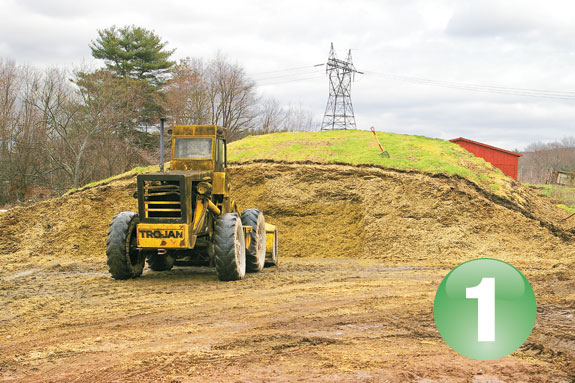
Photo 1:
The ultimate “no-no” when it comes to silage piles. By not covering a pile, the surface is continually exposed to rain and air.
Many cubic feet of silage are lost to spoilage and as rain continues to leach down through the pile, many pounds of soluble nutrients are dissolved and carried away in runoff.
Many pounds of organic matter are thrown away on this poorly packed and managed pile of corn.
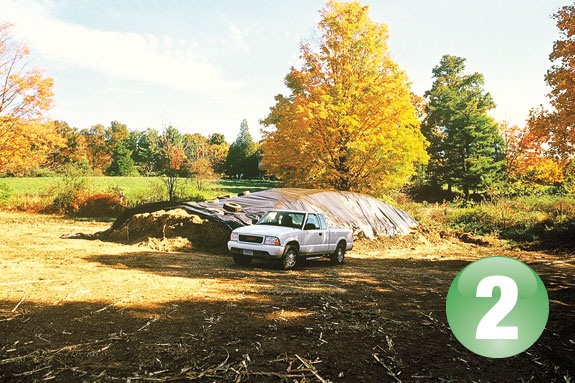
Photo 2:
This small drive-over pile was a last-minute thought – late in the season and on the dirt by the side of the corn field. The small size of the pile will keep it from fermenting properly, since there is little chance it was packed with enough weight.
Even though it is covered with plastic, there will be a lot of air getting underneath since there are no tires to weigh it down.
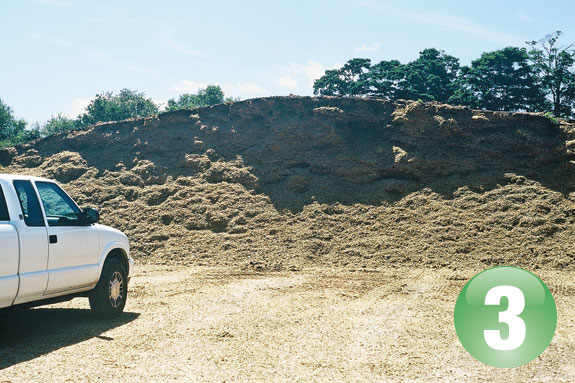
Photo 3:
The many pounds of silage lying on the concrete in front of this pile is already undergoing a secondary fermentation and re-cooking.
The gouging and pitting from the loader exposes many more square feet of surface area to the air, as well.
If it rains, all that silage will be soaking wet by the time it gets loaded and the feeder will have no idea how much dry matter is in the mixer wagon and ration.
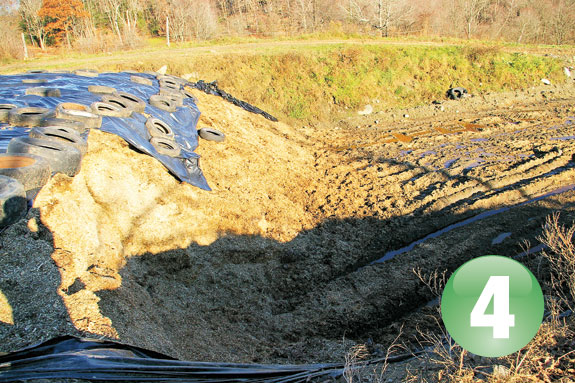
Photo 4:
This silage was put in a 10-foot-deep trench with a dirt floor. A loader was routinely used to dig silage out. Where does the mud end and the silage begin? Any face management is non-existent.
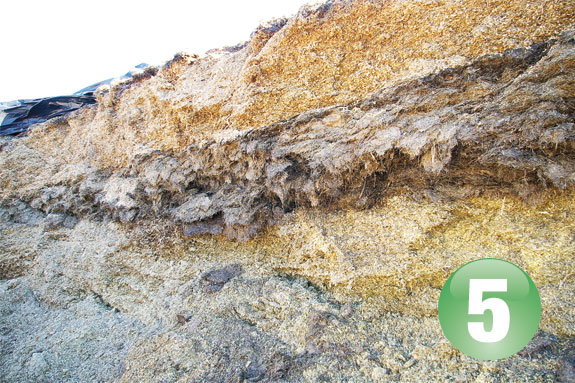
Photo 5:
This dairy farmer had some grass to chop at the same time as his corn. So he piled it on top of the corn and then returned to chopping the corn.
Combining different forages like this makes it impossible to maintain a consistent ration, not to mention the difficulty in properly managing and maintaining a clean face.
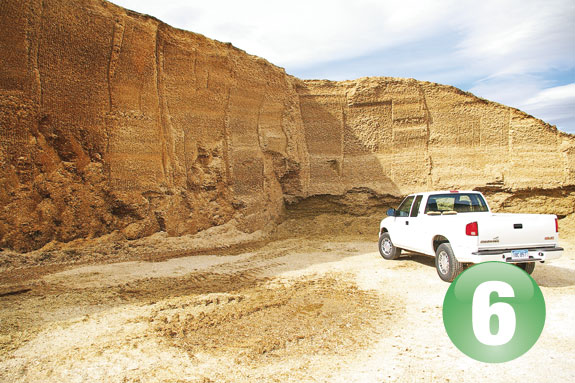
Photo 6:
This is a large dairy farm that uses a facer to maintain a smooth face on this massive pile. However, many tons of silage are still spoiled with the way this pile is being carved and fed out.
Dairy farms with many thousands of tons of silage must plan ahead when designing silage storage systems.
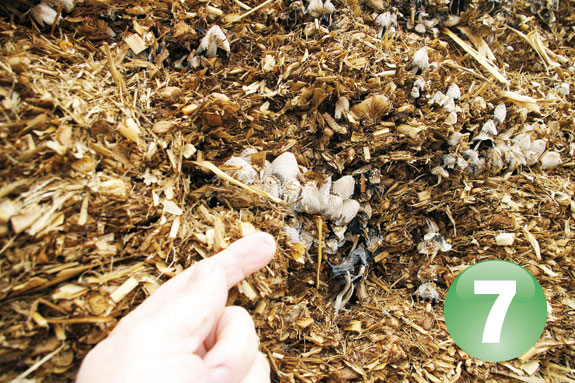
Photo 7:
Silage faces left to the open air for long periods of time are completely ruined with molds and fungi.
This face has a nice crop of mushrooms growing in the blackened organic matter that started out as good corn silage.
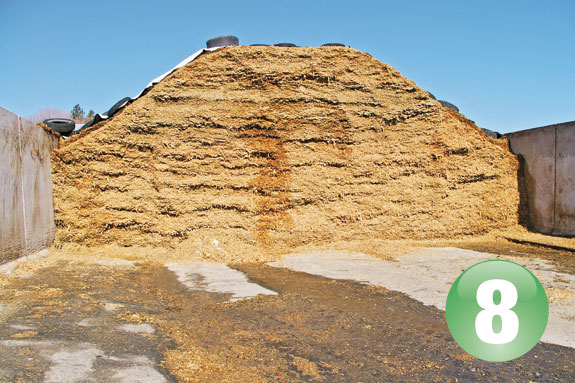
Photo 8:
This pile has been sized properly for the daily needs of the dairy. The farmer gets across the face every day and does a fair job of managing the face with a front-end loader, keeping gouging and pitting of the face to a minimum.
Very little is left behind that will begin to re-ferment before the next day’s feeding. Recent rain runoff can be seen where water found a low spot on the plastic before spilling down the face.
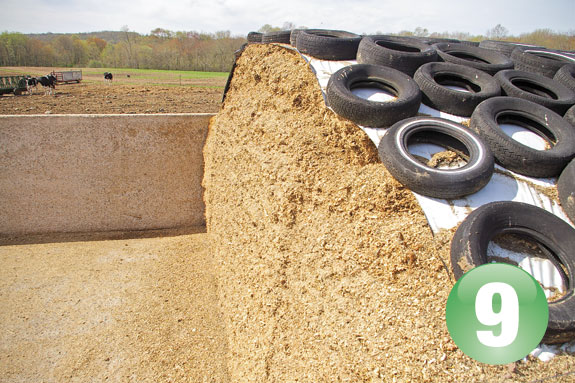
Photo 9:
An extremely well-managed face done with a skid-steer tractor.
Note the even, vertical face and the nearly total absence of spoilage on the top of this pile.
Recovery of dry matter in a pile like this is nearly 100 percent.

-
John Hibma/h3>
- Nutritionist
- Central Connecticut Co-operative Farms Association
- Email John Hibma






